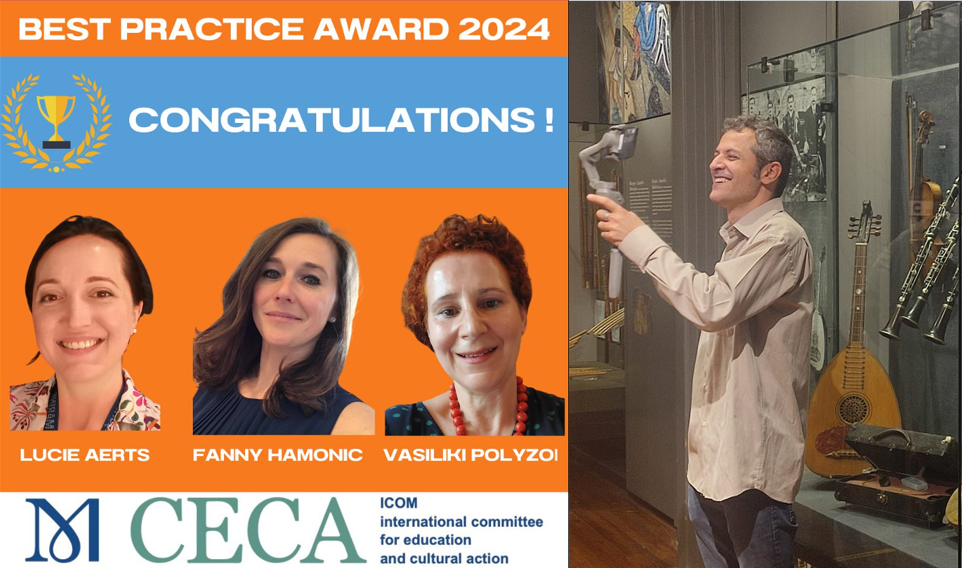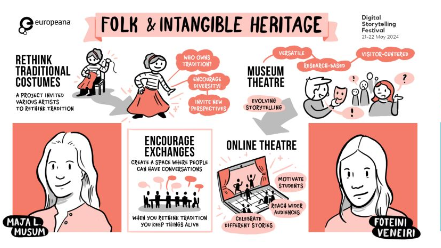Once you have accepted the fact that museum theatre, as a branch of the performing arts, can take all sorts of forms (the contemporary and experimental, as well as the more traditional and established models) then it is really no great leap to see the huge potential of museum theatre within the digital transition of museums & heritage learning.
In fact, theatre and performance methodologies have long been there, behind the scenes, informing the character-centred research that underpins script-writing for 1st person dramatised content in exhibitions. (You know, the pre-recorded performances that are played on screens or via projection or audio devices, mostly at museums and historic sites).
When the methodology of a well-crafted performance – gesture, tone, dramaturgy, dialogue, etc. – informs the design of an educational encounter with our environmental, cultural, or scientific heritage, it can make ALL the difference!
There’s a lot to learn here about the possibilities and limitations of different media and modalities, but at Heterotopia we’re really interested in following those conversations; finding out about the many ways in which theatre & performance are informing the design of digital and transmedia engagement with heritage.
Here are three recent examples from the UK for you to check out: an in-gallery / online experience, a podcast series, and a synchronous e-learning programme:
Living Portraits
Made in partnership with Athena Art Foundation, the Colnaghi Foundation, and Megaverse, The National Portrait Gallery’s ‘Living Portraits’ experience is a new model for digital engagement which allows you to hear directly from 19th century bare knuckle boxer and butcher Jem Belcher. The use of 3D animation and motion capture technology enables Belcher to speak to viewers with the skillful aid of a ‘puppeteered’ performance made in partnership with the National Youth Theatre and award-winning young writer and director Edem Kelman. The objective is to engage audiences online and in-gallery with little-known figures in collections of historic art. You can view the first of these experiments here and read about the creative process here.
The Museum of Bad Vibes
This fresh and lively BBC Sounds Audio Lab podcast series mixes creative dramatisations with interviews and research to explore a collection of cultural and spiritual artefacts housed in British museums: an Akan Gold weight, a Benin Bronze, a Chinese Ancestral Tablet and a Papua New Guinean Koi board. The five-part series asks what the objects might say if they could tell their own stories. Most importantly, writer and presenter Hanna Adan uses this innovative format to explore how the items got there in the first place, asking whether they could or should be returned to their countries and communities of origin. Think drama and performance have nothing to contribute to the serious debate around cultural heritage restitution? Think again! Read this interview with Hanna Adan and download the podcast here.
Zoom Through History
These interactive workshops and learning resources aim to bring famous characters from history into the realm of online learning. Developed and delivered in partnership with some of the UK’s leading heritage sites (such as The Tower of London and The Natural History Museum) Zoom Through History brings first-person, costumed interpretation (already a firm feature of on-site museum learning in the UK) into synchronous e-learning for school classrooms. The creative brainchild of Ceridwen Theatre Company in Wales, the programme presents schools with a menu of important people from history with whom a classroom full of pupils can connect for a 45-60 minute interactive workshop (delivered via Zoom). More information here on the website, or check out their bespoke programme of character-led workshops for Historic Royal Palaces here.






